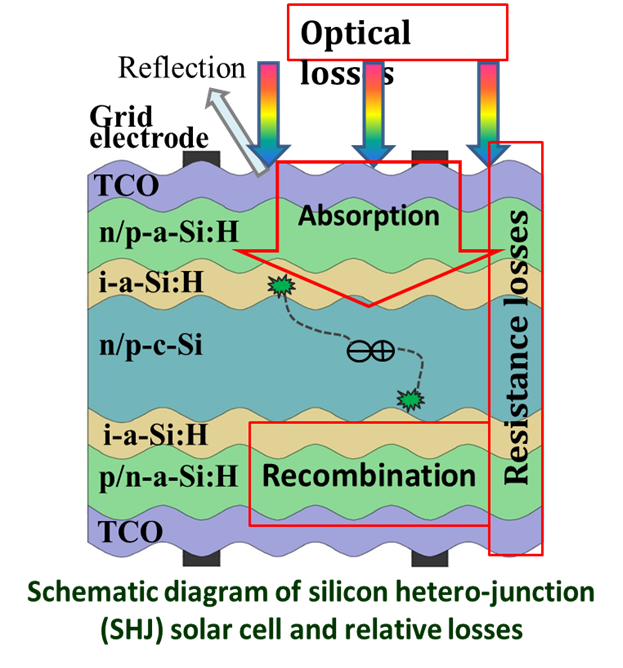Photovoltaics
Date:22-09-2017 | 【Print】 【close】
Since 2015, the Research Center for New Energy Technology (RCNET) at the Shanghai Institute of Microsystem and Information Technology (SIMIT) and the Institute for Energy and Climate Research 5-Photovoltaics (IEK-5) at the Research Center Jülich (FZJ) collaborated on the material development for silicon heterojunction (SHJ) solar cells aiming at a deeper understand of limiting mechanisms within the device and at the improvement of the solar energy conversion efficiency. In particular, SHJ solar cells featuring wide gas silicon alloy contact layers from IEK-5 and novel metal oxide window layer materials from RCNET were jointly fabricated and investigated. The tunable and beneficial material properties of the silicon alloys and the metal oxides allow for a systematic investigation of the impact of these layers and their interfaces on the solar cell performance as well as a high potential to improve the state-of-the-art SHJ solar cell efficiency. A synergy effect of this collaboration is due to the fact that RCNET will support with a pilot production line and good access to cell and module industry, while IEK-5 brings in its strong knowhow in thin-film technology, its strong characterization platform within FZJ, and a good access to equipment industry. In addition to the exchange of examples and the joint device fabrication, the exchange of PhD students and scientists as well as the acquisition of bilateral project funding are targeted. Involvement of industrial partners from both sides into such projects will be possible. At present, Dr. Weiyuan Duan graduated from SIMIT has been working as the post-doctoral in FZJ since July in 2016. And two sides are jointly apply for the NFSC-DFT Collaborative Fund.
IEK5-Photovoltaics and RCNET have been working together on “Novel thin films for silicon heterojunction solar cells” for two years under the framework of the Virtual Joint Research Institute on Functional Materials and Electronics. More than 80% fill factor of SHJ solar cell with IWO as alternative TCO has been obtained. High conversion efficiency of more than 23% has been achieved on SHJ solar cells. Some advanced characterization system for films and devices have been established in both of IEK-5 and RCNET. Silicon oxide layers with wide bandgap have been researched in IEK-5, which revealed that those wide bandgap layers are potential to be as a window layer of SHJ solar cell. Recently, light-induced degradation investigation of SHJ solar cells has been carried out by these two institutes. Through the evolution of the photovoltaic conversion efficiency under illumination, we found that a significant improvement of the cell efficiency could be observed at the beginning of 100 hours of illumination. Then a decrease of cell performance occurred and the efficiency became stable after 600 hours of degradation. Dr. Weiyuan Duan graduated from SIMIT is working as the post-doctoral in FZJ.


